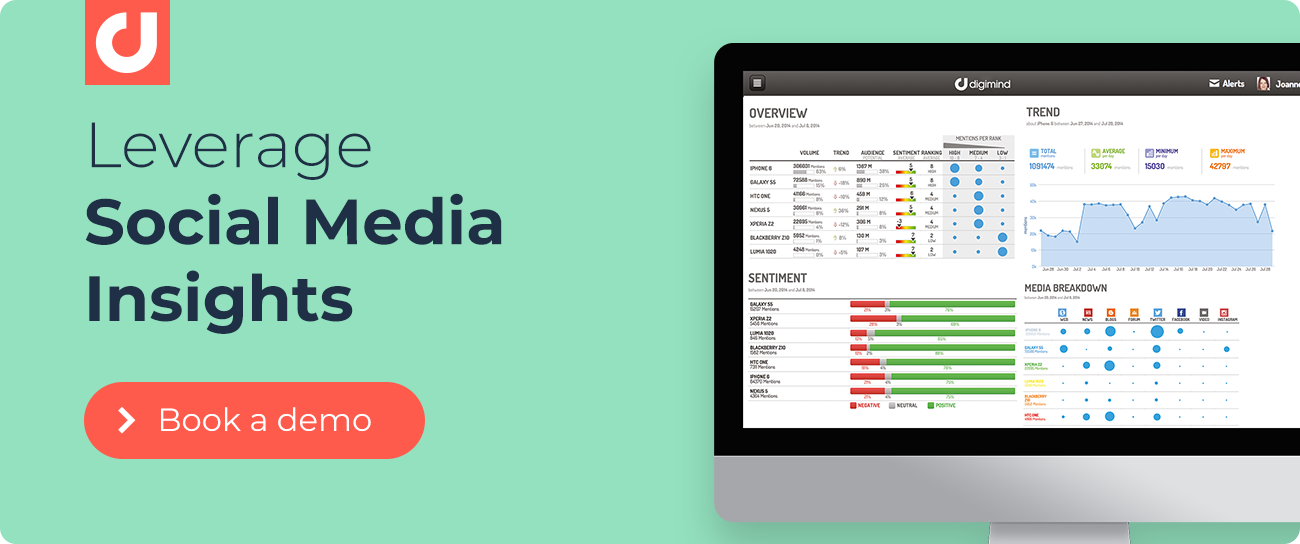The Five Commandments of Social Media Monitoring
By 2020, Forrester predicts insight-driven companies will earn three times more revenue than their counterparts. No doubt businesses have grown more committed to obtaining and using consumer insights to accelerate their strategies and outpace competitors, with a reported 63% of marketers in the United States and United Kingdom alone aiming to increase spending on marketing technology in 2018 (Wipro and Coleman Parkes Research).
Social media, where consumer discussions are rife with personal experiences and opinions about brands, is rich in such insights and trends. At the same time, it is not a simple matter of keying in a set of queries into your Facebook or Twitter search bar and expecting straightforward answers. Marketers must also be astute in defining a well-rounded strategy which considers only relevant and impactful insights – or face the ever dreaded data overload.
Here are five social media monitoring strategies and best practices every digital marketer or social media analyst must follow:
- Have a clear objective for social media monitoring
- Monitor relevant data sets
- Visualize data in a clear and concise manner
- Explain significant trends in your data
- Share valuable insights with other teams
1. Begin with the End in Mind
A clearly defined objective is essential to focus your social media monitoring strategy on the important data sets. For example, a content marketer who is aiming to generate publicity for a brand, should monitor the company’s online share of voice, reach, and evolution of brand related discussions during the campaign. A customer experience manager on the other hand, would be watching consumer sentiment and key topics in reviews, to identify in-store experiences or other aspects of customer service that can be improved.
Just like how a journey needs a destination, knowing the primary goals you need to achieve, will give your social media monitoring strategy direction and structure.
2. The KonMari Method of Data Gathering
The KonMari method advocates holding onto belongings if and only if – holding and looking at them sparks joy. Similarly, data sets on your social media monitoring tool, should inspire or accelerate decisions that help your marketing campaigns scale and drive concrete ROI.
Remember: the time spent on your social media monitoring tool, should be used for identifying trends and re-calibrating marketing strategies, not muddling through confusing data sets that do not move you closer to your objective! “Nice to have” should not apply to your social media monitoring strategy.
3. Visualize, Visualize, Visualize
65% of people are visual thinkers. Presenting data collected in charts, tables, and graphs that are easy to read, will help marketing teams to not just understand them better, but also encourage them to take action using these insights to reduce subjectivity in work.
 Digimind Social dashboard used for benchmarking airlines in the EMEA region.
Digimind Social dashboard used for benchmarking airlines in the EMEA region.
Most social media monitoring tools allow users to build customized dashboards for specific teams and purposes. Display your primary data sets in the most prominent section of your dashboard, followed by secondary data sets in subsequent sections of your social media monitoring report. Companies with significant bandwidth in budget, talent, and logistics, can also establish a social media command center to further centralize data teams.
4. Telling the Story Behind Your Social Media Data
More important than snazzy charts and graphs, is a marketer’s ability to break down the mountain of online data into meaningful insights which can be acted on. Besides deep diving into real-time data dashboards on your social media monitoring tool, you may also wish to draw on personal knowledge of external events, to explain noteworthy trends observed. Having a good understanding of your competitors’ moves, is also helpful for explaining conversational shifts in your industry during the period monitored.
Bonus: Get the ultimate recipe to master social media analytics for your company!
5. Sharing is Caring
An oft overlooked step in social media monitoring strategies, is delivering insights gathered to the relevant teams outside your digital analytics and marketing teams. With market trends evolving more and more rapidly, companies can no longer afford a siloed approach towards data.
By monitoring consumer discussions around themselves and their competitors, ASUS discovered that battery life and camera quality, were the two most sought after features by smartphone users. This information was used by the product team to develop the ASUS ZenFone Zoom S, the first in the series to feature a dual rear lens camera.
 The ASUS ZenFone Zoom S was developed based on insights obtained from opinions shared by smartphone users on social media.
The ASUS ZenFone Zoom S was developed based on insights obtained from opinions shared by smartphone users on social media.
Social media is chock full of clues on the next steps a brand should take, whether in product development or customer experience. But sometimes, these clues can only be deciphered by a specific team looking for a specific signal. To avoid missing such clues, analytics teams must be proactive in delivering relevant insights to their colleagues.
A customized internal newsletter is one good way of alerting various teams. Managers and team leads may also wish to familiarize themselves with the needs and priorities of other teams through regular meetings and discussions.
Selecting the Right Social Media Monitoring Tool
The best social media monitoring strategies not only enable marketers to re-calibrate campaigns with greater dexterity; they also empower the organization as a whole in making data driven decisions. Selecting the right social media monitoring tool that can meet your company or client’s specific needs, is key to keeping up with all the real-time conversations happening on social media.
Keen to see if Digimind Social is the best fit for your social media monitoring strategies? Schedule a free demo now.

Written by Melissa Chue
Melissa is a digital advocate who loves diving into the latest trends in digital and social media. Since joining Digimind’s marketing team in 2015, she has written studies for over 15 industries in Asia Pacific. When she is not telling stories about data, Melissa can be found exploring her favourite cafes and hangouts on Instagram @chuepachups.
